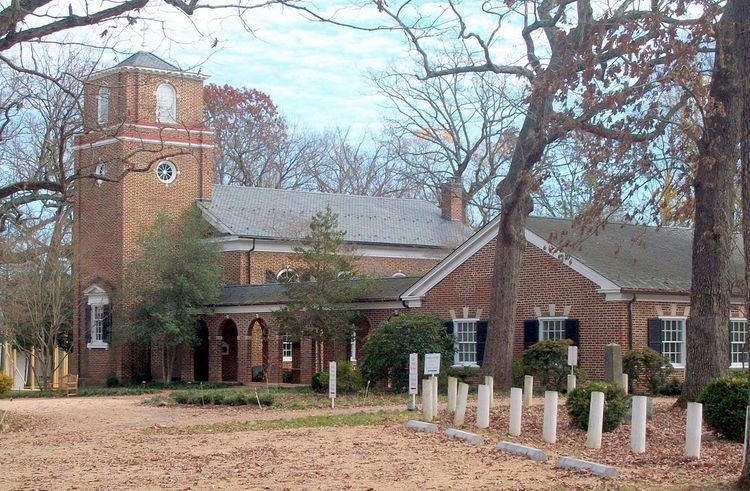Built 1863 VLR # 002-0399 Opened 1863 Phone +1 540-456-6334 | NRHP Reference # 82004535 Designated VLR January 20, 1981, 1981 Area 2 ha Added to NRHP 8 July 1982 | |
 | ||
Address 7599 Rockfish Gap Turnpike, Greenwood, VA 22943, USA Architectural style Colonial Revival architecture Similar Diocese of Virginia, Blue Ridge Mountains, Grace Episcopal Church, Trinity Episcopal Church, Buck Mountain Episcopal Profiles | ||
Emmanuel Church is a historic Episcopal church located at Greenwood in Albemarle County, Virginia. Emmanuel Episcopal Church is a parish church in the Episcopal Diocese of Virginia.
Contents
The mission of Emmanuel Episcopal Church is: ""May we strive to live in Christ and do his work from this place."
History of Emmanuel Church
In the 1850s church members began meeting in homes and then in a Baptist church in Hillsboro. The first service in the new building was on Christmas Day 1863 with preaching by Reverend Dabney C. T. Davis. In 1868 the church entered into an agreement with St. Paul’s – Ivy to share a rector and resources. In 1899 the church planted St. Georges Chapel where services were held from 1899 to 1941. In 1900 Archdeacon Neve established the Church of the Holy Cross near Batesville as a mission of Emmanuel.
The original church was built in 1863, Thomas Conrad Bowen (Grandfather of James Armistead Shirley Sr. of Greenwood) gave the original building materials for the Church, with additions and modifications made in 1905 and 1911. The 1911 modifications were largely financed by children of Chiswell Langhorne, including Nancy Astor, Viscountess Astor. These modifications were designed by noted architect Waddy Butler Wood (1869-1944). The church consists of a narthex located in the bell tower, nave with gallery, and chancel flanked by two small rooms. It is a rectangular brick building with a slate roof. The parish hall was doubled in size and restorations made to the church about 1940 by Charlottesville architect Milton L. Grigg (1905-1982). Arcades connect the church to the parish hall and form a cloistered courtyard. It was added to the National Register of Historic Places in 1982.
